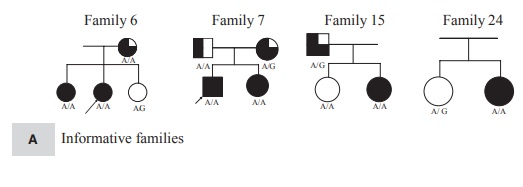Genetic Factors for Periodontal Diseases and Twin Model
DOI:
https://doi.org/10.31033/abjar.2.1.1Keywords:
genetic factor, illness, periodontal, diseases, heritabilityAbstract
It appears that periodontal disease is a collection of illnesses with overlapping symptomatology rather than a single illness with varying clinical signs. Periodontal diseases may have a complex character. Given that many risk factors for periodontal disease tend to cluster in families for genetic or cultural reasons, it will be crucial to take these factors into account when researching familial clustering or potential genetic causes. Finding potential genes that could be the cause of a person's genetic vulnerability to periodontal disease will be crucial. The most obvious candidate genes are those that may influence how the immune system reacts to oral bacteria, but further study of disease-predisposing features, such as those related to tissue response, may reveal new hints regarding potential candidate genes. Clinical professionals may be better equipped to identify high-risk individuals for specialized prevention and treatment if these genes are discovered. The majority of the time, the existence of a number of environmental risk factors combined with a number of susceptibility variables during a specific stage of life is what most often leads to periodontitis developing in a person. The stronger the genetic predisposition and the greater the risk for early periodontitis development, the more susceptibility factors a person has inherited. As our understanding of the genes responsible for both major and modifiable diseases grows, numerous genetic tests may be developed. Medline, the Cochrane Database of Systematic Reviews, and DARE were used to compile the database. The database was compiled over the last 25 years, taking into account all developments and new evidence that occurred during that time. Running a preliminary search and noting the terms used in the titles and abstracts as well as the subject headers helped make the search more sensitive. The key concept was kept in mind, and synonym terms were searched using MeSH headings. By adhering to the inclusion and exclusion criteria for selecting articles, search results were narrowed down to those that supplied information and support for both periodontitis and genetics. The only articles left out were those that covered genetics in general.
Downloads
References
Johnson NW, Griffiths GS, & Wilton JMA. (1988). Detection of high risk groups and individuals for periodontal diseases. Evidence for the existence of high risk groups and individuals and approaches to their detection. J Clin Periodontal, 15, 276-82.
Klien H. (1946). The family and dental disease (DMF) experience in parents and offspring. J AM Dent Assoc., 33, 743-45.
Goteiner D, & Gold man MJ. (1984). Human lymphocyte antigen haplotype and resistance to periodontitis. J Periodontal, 55, 155-58.
Schenkein HA. (2000). Finding genetic risk factors for periodontal diseases: is the climb worth the view?. Periodontol, 30, 79-90.
Delgado W, & Calderon R. (1979). Actalasia in two Peruvian siblings. J Oral Path, 358-68.
Eastman JRM, & Bixler D. (1983). Clinical, laboratory and genetic investigation of hypophosphatasia: Support for autosomal dominant inheritance with homozygous lethality. J Craniofacial Genetics and Development Biol. 3, 213-34.
Fung DE. (1983). Hypophosphatasia. British Dent J., 154, 49-50.
Peterson RJ, & Marsh CL. (1979). The relationship of alpha-1 and anti trypsin to inflammatory periodontal disease. J Periodontal, 50, 31-35.
Hart TC, Marazita ML, & Scheinkein HA. (1992). Re-interpretation of the evidence for X-linked dominant inheritance of juvenile periodontitis. J Periodontal, 63, 169-73.
Loos BG, & Velden UV. (2003). Genetics in relation to periodontitis. in Lindhe J, Karring T, Lang NP (Eds). Clinical periodontology and implant dentistry. (4th ed.) Jaypee Brothers, pp. 387-399.
Core LA, Nance WEM, & HofSteda P, et al. (1993). Self reported periodontal disease in a virgina twin population. J Periodontal, 64, 1205-08.
Michalowicz BS, et al. (1991). Periodontal findings in Adult twins. J Periodontal, 62, 293-99.
Hart TC, & Kornman KS. (1997). Genetic factors in the pathogenesis of periodontitis. Periodontal, 14, 202-15.
Kinane DF, & Hart TC. (2003). Genes and gene polymorphisms associated with periodontal disease. Crit Rev Oral Biol Med., 14(6), 430-49.
Loos BG, van der Velden U, & Laine ML. (2008). Genetics and periodontitis. Ned Tijdschr Tandheelkd., 115(2), 87-92.
Nicu EA, Van der Velden U, Nieuwland R, Everts V, & Loos BG. (2009). Elevated platelet and leukocyte response to oral bacteria in periodontitis. J Thromb Haemost, 7(1), 162-70.
Papapanagiotou D1, Nicu EA, Bizzarro S, Gerdes VE, Meijers JC, Nieuwland R, van der Velden U, & Loos BG. (2009). Periodontitis is associated with platelet activation. Atherosclerosis, 202(2), 605-11.
Laine ML1, Loos BG, & Crielaard W. (2010). Gene polymorphisms in chronic periodontitis. Int J Dent., 2010, 324719.
Laine ML, Moustakis V, Koumakis L, Potamias G, & Loos BG. (2013). Modeling susceptibility to periodontitis. J Dent Res., 2(1), 45-50.

Downloads
Published
How to Cite
Issue
Section
ARK
License
Copyright (c) 2023 Haryanto Weda

This work is licensed under a Creative Commons Attribution 4.0 International License.
Research Articles in 'Applied Science and Biotechnology Journal for Advanced Research' are Open Access articles published under the Creative Commons CC BY License Creative Commons Attribution 4.0 International License http://creativecommons.org/licenses/by/4.0/. This license allows you to share – copy and redistribute the material in any medium or format. Adapt – remix, transform, and build upon the material for any purpose, even commercially.










